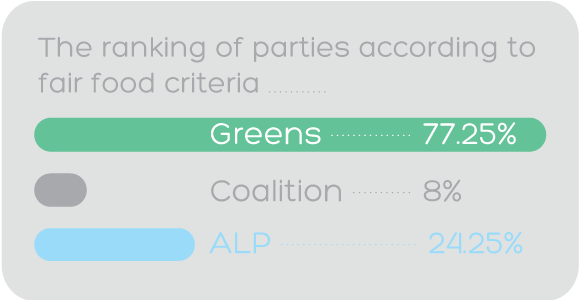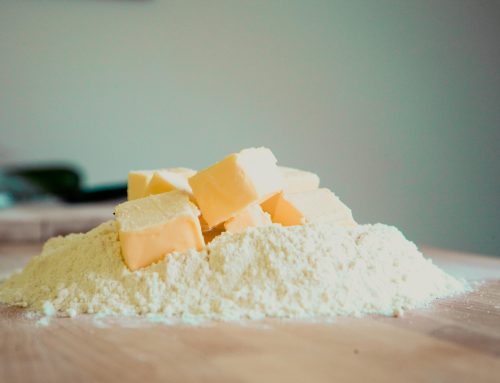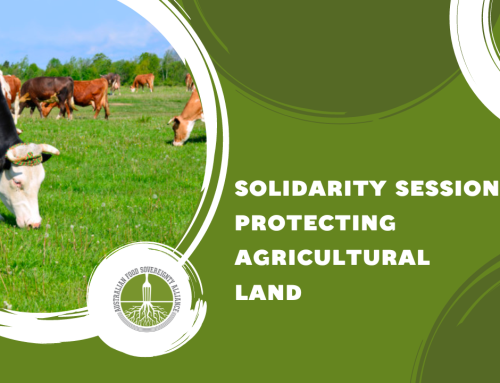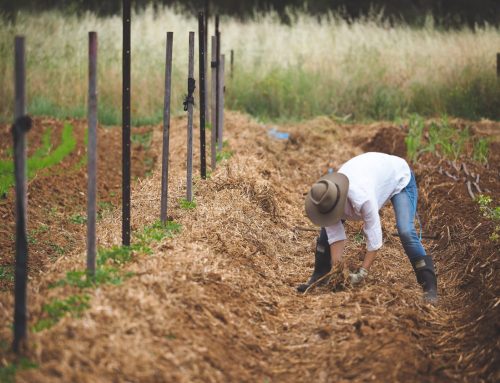A report on a public symposium hosted by Monash University Centre for Regulatory Studies and The University of Melbourne Law School. Thursday August 1st, Treasury Theatre, Melbourne.
[button_link url=”http://www.law.monash.edu.au/centres/regstudies/supermarket-power-symposium.pdf” target=”blank” style=”dark” title=”” i class-“icon-download-alt” id=”” onclick=””]Download pdf document[/button_link]
By Dr Adrian Cameron, Senior Research Fellow,
Deakin University Centre for Physical Activity and Nutrition Research.
Twitter: https://twitter.com/ay_jay_cee Email: adrian.cameron@deakin.edu.au
The symposium flyer got it right – supermarkets do “occupy a powerful and increasingly controversial place in Australian society”. Barely a day goes without the major supermarkets being the target of media scrutiny. This timely and topical public symposium was convened to begin a discussion of the issues for growers, suppliers, other retailers and citizens created by the increasing power of Australia’s supermarkets.
The financial picture painted of the Australian supermarket landscape was of a market dominated by three players (MetCash, the suppliers of IGA was nominated as a third, but largely ignored market leader).
The market share of Coles and Woolworths, now the 21st and 25th biggest retailers in the world,1 is remarkable by any global standard, with the sector having seen the generation of enormous profits for shareholders over the past two decades and the expansion of supermarket power to include production of an ever-increasing stable of private labels, petrol, alcohol and hardware retailing.
Based on their phenomenal and increasing market domination, much of the morning session focused on the need for regulation of the sector and the place of the Australian Competition and Consumer Commission in this. The discussion of regulatory options demonstrated the legal and economic complexities of proving and enforcing concepts such as abuse of dominance, anticompetitive arrangements, barriers to market entry and expansion and unconscionable conduct. Vital as these issues are to the actors in the food supply chain, it becomes increasingly apparent that the enforcement of these concepts using any type of regulatory power, either voluntary or enforced, is likely to a) be extremely difficult and expensive and b) largely ignores some of the key issues for Australia’s food supply such as the quality, sustainability and healthfulness of Australia’s food supply.
Power play – the power dynamic between supermarkets and their suppliers

One perception of the major Australian supermarkets is that the power differential over small suppliers and the absence of real competition outside of the two leading chains is leading to the abuse of small growers and suppliers. It became apparent during the day that this is a perception Coles were at pains to debunk, with the retailer having offered fact sheets on their operations and dealings with growers and suppliers to all speakers prior to the symposium. One speaker noted that he was convinced based on this information that at least some of the farmers who supply Coles are doing very well out of the relationship. While this was reassuring for those suppliers, the reality in Australian supermarket retailing is that the products of small growers and suppliers appear increasingly to have no place in their stores.
While an elite few farmers grow the majority of produce sold in Coles and Woolworths stores,2 small growers are increasingly absent from the market place. The retailers will argue that this is necessary in order to maintain hungry supply chains and produce standards and this may be true. The trade-off is that we get an Australia dominated by mega-agro-supermarket-businesses controlled by a few market leaders with their products the only choice for consumers. A concentrated rural sector, a food supply increasingly exposed to natural disasters as demonstrated by the Queensland banana crisis, and the slow death of diversity in our retail sector and food supply are other likely consequences. Like many of the questions raised by the dominance of Coles and Woolworths, whether this trade-off is reasonable and what we want for our food supply is a question outside the scope of regulators and is increasingly not a choice given to consumers – the choice is made for them as the supermarkets go about their business.
Supermarkets making up the rules – the case of free range eggs
Over the past five to ten years, I have diligently purchased my free range eggs, happy to pay the price to end the cruelty of battery chicken farming. And with many Australians doing likewise, this seems to be working – the supermarkets are increasingly stocking free range eggs with what must surely be an inevitable improvement in animal welfare.
But Christine Parker’s presentation based on her recent paper “The Happy Hen on Your Supermarket Shelf”3 cracked my egg, demonstrating the ways in which, in the absence of official industry standards as to what free-range means, the supermarkets are selectively interpreting the definition of free-range and the desires of the animal welfare movement to provide eggs that have the stamp of free-range approval, but which in reality are unlikely to meet most people’s idea of an animal welfare gold standard. Coles have now written their own standard of a maximum 10,000 birds per hectare, and based on their market power, this is increasingly likely to become an industry standard, with the Queensland Government recently moving from a nationally best-practice 1500 hens/hectare to the Coles standard of six times that figure. Welfare issues such as whether hens are allowed outside before laying age, the proportion of time hens are allowed out, beak trimming practices, what happens to the hens after their one year of maximum egg production and what hens are fed are carefully ignored, with the retailers and producers only held to account based on a single metric, and then one for which they choose the standard. In the absence of regulation, in this case of industry standards, the major supermarkets will determine the rules based on what is likely to resemble their most profitable scenario. The most profitable scenario would rarely be expected to fully factor in the impact on the environment, animal welfare, the community or indeed human health.
Is cheap food good for Australians and should the food system be responsible for social welfare?
Jane Dixon, a food sociologist and social scientist from the Australian National University presented the results of a fascinating ethnographic examination into the role that supermarkets play in shaping the well-being of communities. The changing reality of our food systems and lives is reflected in Dixon’s summary of the paradoxical tensions that modern supermarket shopping brings to communities:
“Supermarkets lubricate daily life through easy shopping for many, but they deny opportunities for incidental and valued social interaction. They make busy lives tolerable through providing a convenient retail format for parents who want to safeguard family health and well-being, but they provide other moral economy hazards in the form of unhealthy food and a food economy that does not benefit the community. Supermarkets provide opportunities for casual and part time work, but displace alternative retail outlets with attendant job losses. Lastly, they provide an area with a symbol of strength and open for business ethos, but old-time residents are aware that this symbol of corporate strength is also a symbol of exploitation because they see home brands which they know are sourced overseas compete with local brands.”
There are clear benefits of modern supermarket retailing to busy lives, with Dixon’s paper a reminder that there is also a clear cost to these benefits.
A fascinating discussion following this session brought the cost-benefit paradox into clear relief. One of the clear benefits of modern supermarket retailing to average Australians is the low relative price of food. While supermarkets may be blamed for all manner of societal ills and the commodification of the food system, in response they point to the enormous economies of scale they enjoy and the efficient supply chains they have created that are able to keep the price of food low – a major benefit to struggling Australians. Asked about this issue, Dixon’s response was that the food system should not be held responsible for social welfare. Her view was that it was the job of the Government to support economically struggling Australians, supported by all of our taxes. There are indeed far more efficient and targeted ways of ensuring social welfare than making milk available for one dollar a litre! The proportion of income used to buy food over the past 20 years in Australia has been falling as our incomes have risen,4 suggesting that if the food system were afforded the priority currently given to new clothes, cars, plasma TVs and holidays, most Australians should be in the position of paying for a food system not subsidised by the social, environmental and animal welfare costs inherent in modern agriculture, food production and supermarket retailing. In the USA, it has been reported that only 6% of household expenditure is spent on food (http://www.motherjones.com/blue-marble/2012/01/america-food-spending-less), hinting at the scope that wealthy nations such as theirs (or ours) have for paying the “real price” for food. In the supermarket setting, the real price of food is largely hidden behind the marketing spin that is modern retailing.
What the symposium missed – supermarkets and health

The relationship between the supermarket-driven food system and human health was rarely mentioned on the day. With poor diet being a key determinant of some of the biggest health issues facing the country (obesity, type 2 diabetes, cancer), and with the two major supermarket chains being far and away the largest suppliers of food to Australians, it’s clear that what we buy in supermarkets has the potential to have a major impact on our health. The absence of a health narrative at the symposium was perhaps more a manifestation of the magnitude of the economic and social issues created by the duopoly than a reflection of the importance of supermarkets to our health. The retail food environment is increasingly seen as a key setting for public health intervention, and correspondingly is the subject of increased scrutiny by researchers, advocates and policy makers.5, 6 On the surface, supermarkets like to be seen as the “fresh food people” and it’s certainly true that fresh food is a prominent feature of all Australian supermarkets.
It would be hard to argue, however, that supermarkets are not also a highly obesogenic food environment, with their most heavily promoted foods being exactly the same energy-dense and nutrient poor, hyper-processed foods that are being blamed for our current obesity epidemic. Retailers will lead us to believe that they simply supply what their customers want, but the reality is a much more complex dynamic in which the retailer is equally responsible for shaping the food choices and preferences of consumers7 particularly in relation to over-consumption.6 And as retailers become larger and develop ever more sophisticated marketing strategies and teams, their influence only increases.7
The lived experience of anyone who shops at Coles or Woolworths, backed up by our own academic research in a sample of 35 Melbourne stores, finds the Australian supermarket environment to be particularly obesogenic. The presence of promoted soft drinks and/or chocolate at every checkout is typical of Coles and Safeway stores (apparently the label of “snack free checkout” does not extend to soft drinks!), while four out of ten end-of-aisle displays was found to be similarly snack and/or soft drink promoting.8 Despite the fact that disadvantaged areas are precisely where the need to make the healthy choice the easy choice is greatest, we found that the stocking practices of the big two chains were socioeconomically patterned, with far greater shelf space dedicated to soft drinks, chips, chocolate and confectionery in disadvantaged suburbs.9 When we gathered comparable data on the promotion of soft drinks, chips, chocolate and confectionery from eight other countries, it became clear that the Australian situation is not the norm worldwide, with Australia claiming the dubious honour of world leader in the percentage of both checkouts and end of aisle displays with these products.10 After adjusting for the size of the store, Australian stores also had the greatest shelf length devoted to soft drinks and came second only to the UK in shelf length devoted to all four product types measured (the study included data from the US, Canada, Australia, Denmark, Sweden, Netherlands, UK and New Zealand).10
It is abundantly clear from these figures that Australian supermarkets are far from the fresh-food paradise they would have us believe, with exposure to promotion of ultra-processed snack foods and soft drinks almost unavoidable. The figures from countries such as the Netherlands suggests that this need not be the case, representing hope that even though the multinationals such as Cadbury, Coca Cola and Pepsi appear to be having things all their own way in the supermarket shelves, advocacy for change can have an impact. What we know for sure is that the financial incentives that have created the snack and soft-drink rich supermarket environment that we have described are likely to mean change is difficult without at least one of legislation for change, a drop in sales (unlikely), or negative public opinion.
Is there an alternative?

On a day where the focus was on market domination and its impacts, the talk by Nick Rose from the Australian Food Sovereignty Alliance (AFSA) provided a refreshing change. His was a message of hope for a food system built on an entirely different set of values and principles. Rather than the treadmill of profits that typifies the mainstream “hyper-globalised” and supermarket-based food system, his vision placed the food supply in the context of an essential service that we should all have a say in, with the core principles of ecological sustainability and social responsibility.
The growth of what he described as “creative food economies” (farmer’s markets, local food economies, food hubs, food co-ops etc.) is gaining pace both in Australia and elsewhere, and represents a response by the Australian public to many of the issues highlighted at the symposium, and here. While it is unrealistic to think that the emerging creative food economy might challenge the dominance of the mainstream suppliers and retailers any time soon, it might be hoped that their vision of a food system that doesn’t revolve around profit but considers more fully its effects on the environment, on society and on human health might be one that inspires incorporation of these principles at all levels of our food system. Being a part of that discussion and not leaving our food system to the profit-driven model that motivates the supermarket sector is one part of seeing that happen and the AFSA is to be congratulated for that.
References
- Global Powers of Retailing 2011. (https://www.deloitte.com/assets/Dcom-Global/Local%20Assets/Documents/Consumer%20Business/GlobPowDELOITTE_14%20Jan.pdf. )
- Fyfe M, Millar R. Does the food business stack up. The Age/SMH. 2012 04/06/2012. (http://www.smh.com.au/national/does-the-food-business-stack-up-20120603-1zq0j.html )
- Parker C, Brunswick C, Kotey J. The happy hen on your supermarket shelf: what choice does industrial strength free-range represent for consumers? J Bioeth Inq 2013; 10:165-86. (www.ncbi.nlm.nih.gov/pubmed/23690245 )
- Australian Bureau of Statistics. 4102.0 – Australian Social Trends, Canberra 2006. (http://www.abs.gov.au/ausstats/abs@.nsf/mf/4102.0)
- Swinburn BA, Sacks G, Hall KD, McPherson K, Finegood DT, Moodie ML, et al. The global obesity pandemic: shaped by global drivers and local environments. Lancet 2011; 378:804-14. (www.thelancet.com/journals/lancet/article/PIIS0140-6736(11)60813-1/abstract)
- Hawkes C. Dietary implications of supermarket development: A global perspective. Development Policy Review 2008; 26:657-92. (http://onlinelibrary.wiley.com/doi/10.1111/j.1467-7679.2008.00428.x/abstract)
- Dawson J. Retailer activity in shaping food choice. Food Quality and Preference 2013; 28:339-47. (http://www.sciencedirect.com/science/article/pii/S0950329312002054 )
- Thornton LE, Cameron AJ, McNaughton SA, Worsley A, Crawford DA. The availability of snack food displays that may trigger impulse purchases in Melbourne supermarkets. BMC Public Health 2012; 12:194. (http://www.biomedcentral.com/1471-2458/12/194 )
- Cameron AJ, Thornton LE, McNaughton SA, Crawford D. Variation in supermarket exposure to energy-dense snack foods by socio-economic position. Public Health Nutr 2012:1-8. (http://journals.cambridge.org/action/displayAbstract?fromPage=online&aid=8927659 )
- Thornton LE, Cameron AJ, McNaughton SA, Waterlander WE, Sodergren M, Svastisalee C, et al. Does the availability of snack foods in supermarkets vary internationally? Int J Behav Nutr Phys Act 2013; 10:56. (http://www.ijbnpa.org/content/10/1/56/abstract )






